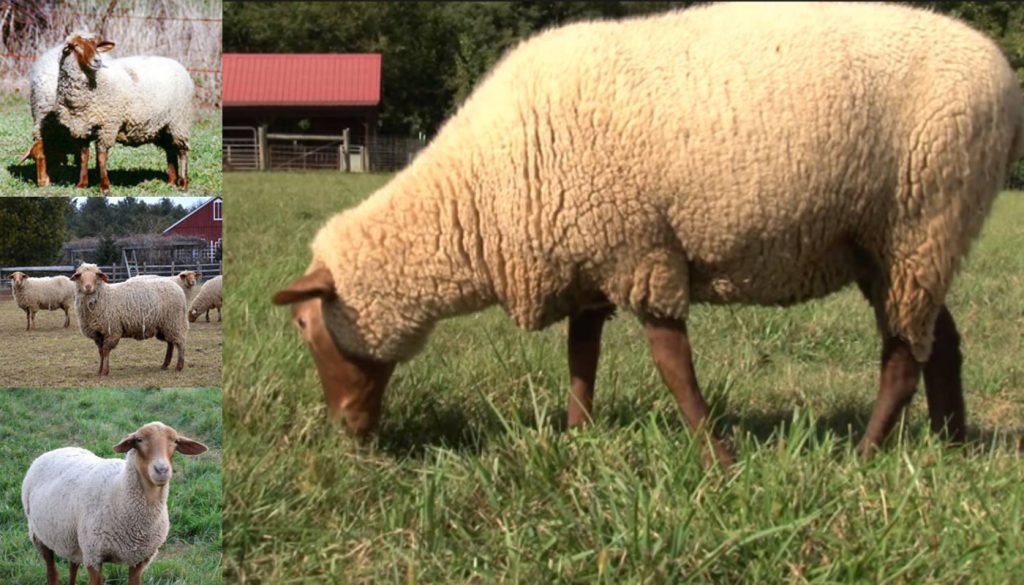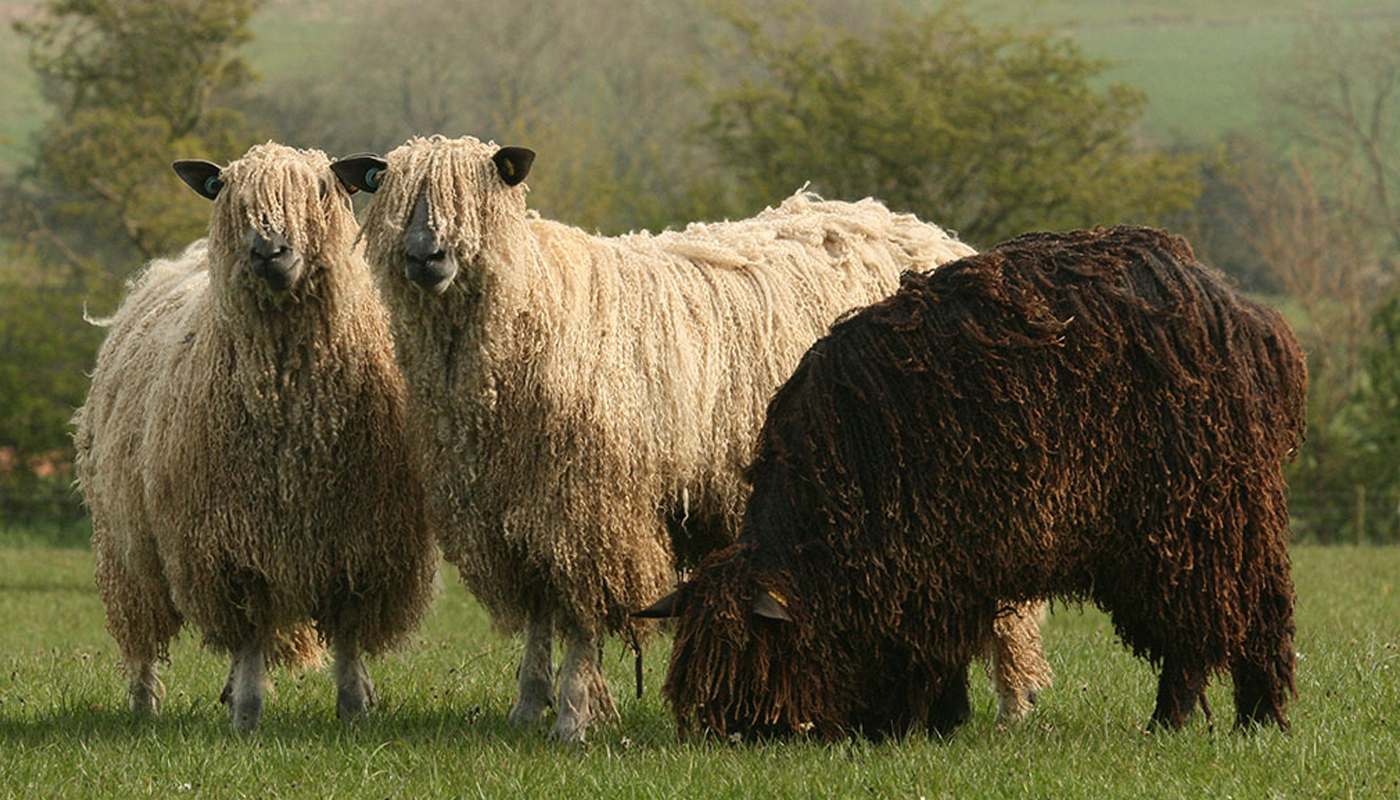
The American Tunis sheep is a beautiful deep creamy colored with a pretty red face and legs. They are also quite an ancient sheep with a rich history dating back to a very old fat-tailed sheep breed documented in ancient texts!
The Tunis is a large breed of sheep that is very docile and bred for its full-flavored meat and wooly coat.
AMERICAN TUNIS SHEEP QUICK PROFILE OVERVIEW |
|
|---|---|
| The Tunis is an American breed of sheep that are primarily bred for its meat. | |
| Country of Origin: | Tunisia |
| Other Names: | Tunis or Tunisian Barbary |
| Breed Size: | Large |
| Main Purpose: | Meat |
| Can be used for | Meat, Milk, Show, Skin, Wool, **LSC (Landscape Management) |
| Temperament: | Docile |
| Ideal Climate: | Mostly all climates |
| Conservation Status: |
Yes, Listed by the *ALC Status/ Rarity: Watch |
| Health Issues? | No known health issues |
| Good Starter Sheep? | They could be a good starter sheep as they are docile and easy to manage |
| Sheep Associations: | National Tunis Sheep Registry |
| Sheep Clubs: | Please refer to the National Tunis Sheep Registry as above for breeder information. |
| Note: *ALC stands for American Livestock Conservancy ** LSC stands for Landscape Management – the animal is used for controlling various vegetation growth |
|
PHYSICAL CHARACTERISTICS |
||||||||||||||||||||||||||||||||
|---|---|---|---|---|---|---|---|---|---|---|---|---|---|---|---|---|---|---|---|---|---|---|---|---|---|---|---|---|---|---|---|---|
| The Tunis is a large breed of sheep that are calm docile sheep with a large body and fat tails that are usually cut. They have long red colored legs that are the same red as their faces. | ||||||||||||||||||||||||||||||||
| Color(s): | Dark cream-colored fleeces, red faces and legs. | |||||||||||||||||||||||||||||||
|
||||||||||||||||||||||||||||||||
EWE BREEDING & MILKING INFORMATION
| They Tunis Ewe can breed out of season and have been known to produce fall lambs | |
| Breeding Period/cycle: | Usually lasts 24 to 36 hours |
| Estrous cycle: | Ave. 17 days/13 to 19 days |
| Gestation Period: | Usually, around 150 to 155 days but most gestation is 152 days |
| No. Lambs/Litter: | 1 is the normal amount but Tunis ewes are well known for having twins |
| Lactation Period: | Usually, around 150 to 240 day but most are milked for 180 days |
| Milking From: | 4 to 6 weeks after lambing |
| Milk Quality: | Good, Listed as ample |
| Milk Ideal for: | Drinking and cheese |
| You may Also Like: | 10 Best Sheep Breeds for Milk |
SHEEP MEAT PRODUCTION INFORMATION
| They Tunis sheep have been bred as a meat producing sheep for generations | ||||||||||
| Meat Production: | Yes, Quality: Good | |||||||||
|
||||||||||
| You may Also Like: | 11 Best Sheep Breeds for Meat Production | |||||||||
SHEEP WOOL PRODUCTION INFORMATION
| The Tunis sheep have an average USDA wool grade of 50’s to 58’s | ||||||||||||||||
| Wool Production? | Yes, Quality: Good | |||||||||||||||
| Wool is used to Produce: | Knitted garments, clothes, blankets, etc. | |||||||||||||||
|
||||||||||||||||
| You may Also Like: | 18 Best Wool Producing Sheep Breeds | |||||||||||||||
SHEEP SKIN PRODUCTION INFORMATION
| Their fine skin is used in many leather goods | |||||||
| Skin Production? | Yes, Quality: Good | ||||||
| Skin is used to Produce: | Kidskin leather products such as shoes, car seats, fine leather coats, gloves, etc. Chamois cloths, leather goods such as seats, shoes and other garments and leather materials such as furniture, etc. |
||||||
|
|||||||
GOOD TO KNOW ABOUT THE AMERICAN TUNIS SHEEP
| The Tunis sheep is a friendly, docile and calm breed of sheep that has been around since probably before the dawn of Christianity. | |
| Child-Friendly? | They are livestock and whilst lambs may be fine around supervised children it is not really ideal to have them around livestock. |
| Landscape Management? | They love to graze and can generally eat most noxious weeds and invasive brush |
| Where to buy them? | They are a heritage breed that is mostly all listed with the National Tunis Sheep Registry so it is best to check with this organization.
Tamarack Vermont Sheep Farm could also be a could source of information on where to purchase this lovely breed. |
GENERAL INFORMATION
The Tunis sheep breed is classified as a large breed of sheep, but it is not as big as most other meat sheep breeds.
The Tunis is one of the oldest livestock breeds in America and their influx into America dates back to the 1700’s.
They Tunis lambs are born with a double undercoat of fur to help them cope with the elements when they are born.
Left uncut the Tunis sheep tail grows very thick and can interfere with breeding.
Tunis ewes can and usually do breed out of season and will produce lambs in the Autumn months as they are very prolific breeders.
HISTORY
The Tunis breed of goat has a very ancient and interesting history that dates back to before the dawn of Christianity.
The American Tunis is the name given to the Tunis variety of sheep that originally originate from Tunisia in North Africa. These sheep were called or described as either “broad tailed”, “Barbary” or “fat tailed” sheep.
They were imported to the States in the late 1700’s where they were sent as a gift for George Washington by the Bey of Tunis.
George Washington entrusted these sheep to a man named Judge Richard Peters who bred the sheep with rams and distributed the lambs from this union across the country.
References to this sheep breed are journaled in the journals of some famous American names such as Richard Peters, Charles Roundtree and Thomas Jefferson.
Through selective breeding the Tunis gradually developed into the breed we know today as the American Tunis sheep breed.
The Tunis sheep breed became a recognized American Livestock breed in the late 18th to early 19th century. This makes them one of the oldest livestock breeds to be developed and recognized in America.
The Tunis sheep breed was prevalent throughout the southeastern States and the mid Atlantic States. They became very well adapted to the climate of these regions and thrived becoming the mainstay of sheep production in these areas of the United States.
During the Civil war, the Tunis sheep breed was nearly wiped up if not thanks to Maynard Spiegener. From South Carolina Maynard Spigener hid the last remaining flock of the American Tunis sheep along the Congaree River near the city of Columbia.
After the war, these sheep were once again bred in the New England and Great Lakes region. It was not until more recent years that the Tunis breed was once again found to be in the Southeast.
They are a large breed with a thick wooly fleece and very distinctive red faces with lop ears and red legs.
They are a calm and docile breed with a fleece that weighs around seven to twelve pounds and turns white when processing. It is a medium grade wool.
They are good graders, heavy milkers and make great mothers to their lambs.
They have a good meat to bone ratio on their carcass and market lambs are quite economical to raise.
Through growing sustainable agricultural movements in the United States, the Tunis Sheep breeds numbers have been gaining ration. They are a very popular homesteaders sheep breed choice as they have a good low input meat, wool and even milk production value.
They are also excellent grazers that tend to thrive in a forage-based production system which also makes them really easy to keep and maintain.
Video
USEFUL LINKS
- United States Lamb Resource Center
- American Sheep Industry Association
- American Sheep Industry Association List of Breed Associations & Standards
- American Milk Sheep Association
- Dairy Sheep Association of North America
- American Wool Council
- Fur Commission USA
- North American Meat Institute
- American Lamb Board
- National Lamb Feeders Association
- American Livestock Conservancy
- Animal Shelter (ASPCA)
- American Veterinary Medical Association
- American Animal Welfare Society
- American Animal Control
- American Animal Husbandry Society
- United States Department of Agriculture
 Romney Sheep Breed – Everything You Need to Know
Romney Sheep Breed – Everything You Need to Know Wensleydale Sheep Breed – Everything You Need to Know
Wensleydale Sheep Breed – Everything You Need to Know Shetland Sheep Breed – Everything You Need to Know
Shetland Sheep Breed – Everything You Need to Know Dorper Sheep Breed – Everything You Need to Know
Dorper Sheep Breed – Everything You Need to Know Merino Sheep Breed – Everything You Need to Know
Merino Sheep Breed – Everything You Need to Know 10 Best Sheep Breeds for Milk
10 Best Sheep Breeds for Milk Clun Forest Sheep Breed – Everything You Need to Know
Clun Forest Sheep Breed – Everything You Need to Know St. Croix Sheep Breed – Everything You Need to Know
St. Croix Sheep Breed – Everything You Need to Know Charollais Sheep Breed – Everything You Need to Know
Charollais Sheep Breed – Everything You Need to Know Scottish Blackface Sheep Breed – Everything You Need to Know
Scottish Blackface Sheep Breed – Everything You Need to Know East Friesian Sheep Breed – Everything You Need to Know
East Friesian Sheep Breed – Everything You Need to Know Polypay Sheep Breed – Everything You Need to Know
Polypay Sheep Breed – Everything You Need to Know